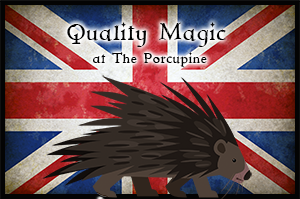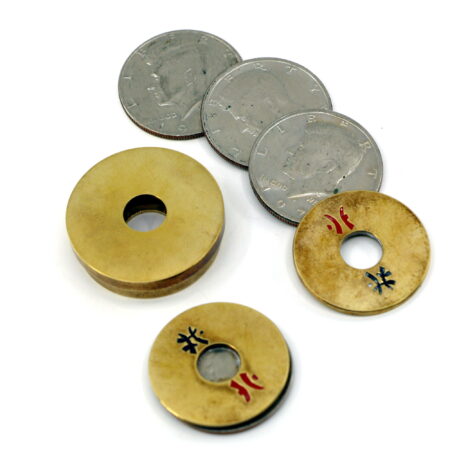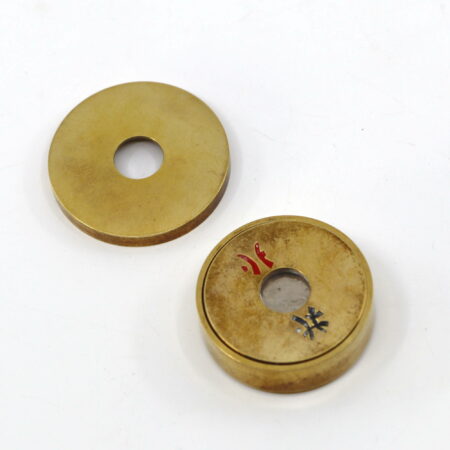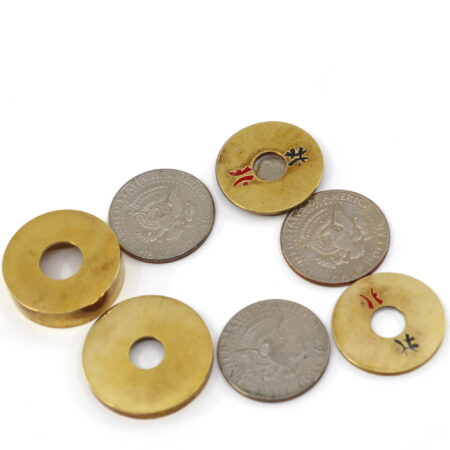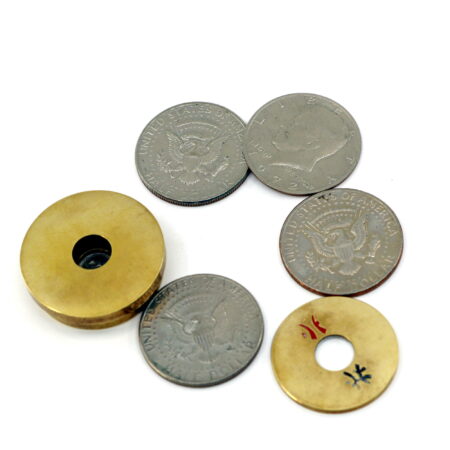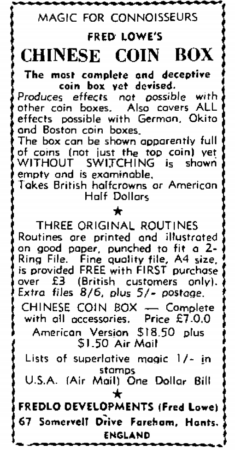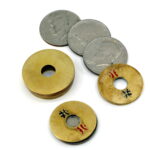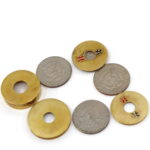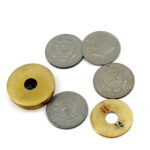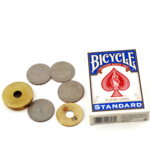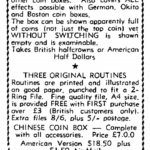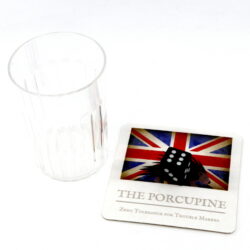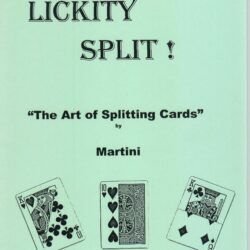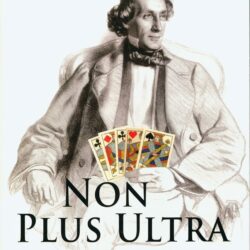Description
If you like Coin Boxes you’ll love what you can do with this special Box from Fred Lowe. It certainly takes some practice to perform the routines smoothly but no more than most other Okito boxes.
The box and coins are perfectly made and you can perform pretty much anything you can do with a standard Okitio, German and Boston coin box too. Along with other routines not possible with those boxes.
Includes:
- Chinese Coin Box
- 1 Gimmicked Chinese Coin
- 1 Gimmicked Half-Dollar
- 3 normal Half-Dollars
- 1 normal Chinese Coin
- 9 pages of printed instructions
Notice: this does not include a “Chinese wand” mentioned in the instructions, but a pencil or chop stick will work perfectly well too.
Routines:
- Chinese Revolution
- Chinese Fall-Out
- Boston Four
- Further Ideas
Effect: This is the latest development in a long line of coin boxes. At the moment of writing (January 1968) it is difficult to see what further useful improvements can be made, but no doubt time will .prove otherwise.
With this new box almost all routines which require a German, Okito or Boston Box can not only be duplicated but magically improved. In addition a new range of possibilities is opened and effects, not possible with the earlier boxes, quickly reveal themselves. Several of these effects are described in this manuscript.
At close-quarters spectators expect to be able to handle the properties we use. I mean, of course, modern spectators – not those of the period when Robert-Houdin and Hoffman were writing and performing. We lose one of our strongest magical assets if we immediately remove the properties – the spectators probably already suspect the apparatus (even cards, coins etc.) and our actions only confirm their suspicions.
Milton Kort, one of the world’s finest close-up magicians (performer and originator), has long advocated the switching of coin boxes so that an examinable box could be left on the table. He published his routine in Bobo’s Modern Coin Magic.
Most readers will know that a German box is a metal box to hold several coins. It has a recessed base into which is fixed a coin. The Boston Box is identical except that the box has a lid. The Okito Box hr.s a lid but is without a recessed base. For many years expert pierformers have used a iSgse coin in the recess of the above boxes, so that the coin could be palmed away and the box left on the table. However, the recess itself was a strong clue to an astute onlooker. Al Baker and Nate Leipzig developed a type of German box which had a recess but also a hole in the base. A special faked coin was used also, through which the working surface could apparently be seen.
John Mulholland brilliantly took us a big step forward by eliminating the recess of the box, using a special faked coin.
My contribution, apart from the new routines and handling, is to have developed a new faked coin. This fake, hereafter called the Chinese ‘See-Thro’ fake, enables us to show the spectators a box which apparently contains several large silver coins and a Chinese coin. They can see the top silver coin through the hole in the Chinese coin. Yet the box is empty and can be left on the table for examination.
The early boxes did not demand precision manufacture but, as they developed, more delicate craftsmanship became necessary. The Chinese Coin Box is made to the highest standards. The box and the fakes are individually fitted. For instance – the ‘See-thro’ fake fits so precisely it is possible to perform the ‘Drop Turnover’ move without the fake separating from the box. Yet the fake drops out freely when desired.
So much for history and mechanics. The handling and routines to be described come under, to my thinking, the term ‘simple sleight-of-hand’. Many ‘ non-sleight’ performers underestimate their actual ability. Experts are usually people with a high persistence threshold – i.e. they don’t give up easily.
(Notice: Includes: Printed Instructions.)
( Post Source: martinsmagic.com - click for details )